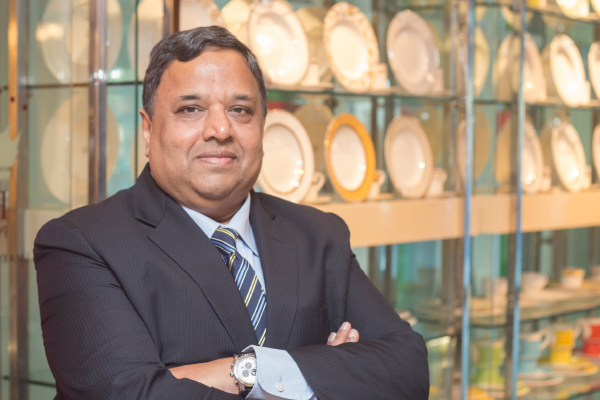Keeping track of the finances of any business is no easy job. As Chief Financial Officer of RAK Ceramics, Pramod Kumar Chand, however, is tasked with this key function in an organisation that spans 160 countries, with a large product portfolio. He told CNME how his strong relationship with IT ensures things run smoothly.
The stats on RAK Ceramics are impressive by most measures. The company has a global annual production capacity of 117 million m2 of ceramic and porcelain tiles, 4.6 million pieces of sanitaryware and 24 million pieces of tableware, with a turnover of $1 billion and a distribution network that spans over 160 countries. The company has its headquarters in Ras Al Khaimah in the United Arab Emirates, where 12 production plants occupy a site of 2.5 million m2 and employ over 8,000 people. With additional plants in Bangladesh and India, the firm has approximately 15,000 employees worldwide.
In the hotseat for the company’s finances sits CFO Pramod Kumar Chand, who has been with the company since 2014. Prior to joining the firm, he was CFO of RAK Investment Authority, having joined from Indian cement firm Birla Corporation, where he spent the vast majority of his career. He has since relished the challenge of working for an international firm. “Joining RAK Ceramics has given me fantastic global experience,” he says. “Our main advantages are the broad range of products we offer and the fact we are so international.”
Founded in 1991, the company started out with just one plant, but since seen huge expansion. Chand is fully aware that technological initiatives could usher in a new era of even greater growth, but wants to ensure that the company is fully prepared for what could result. “Digitalisation is a massive opportunity for us but is heavily prone to risks,” he says. “It’s important to balance innovation and risk management, and in order to do this, I have to work very closely with our CIO, and keep a close eye on market trends.” On a global scale, Chand does not believe the trend has fully impacted manufacturing. “It’s not that mature worldwide,” he says. “It hasn’t quite come into play but over time that will change.”
Although digitalisation is never far from the mind of any forward-thinking CFO, Chand feels the organisation has one key hurdle to overcome before any new initiatives can really get into full swing. He firmly believes that establishing the right IT infrastructure is a prerequisite for wider success. “SAP was implemented in 2012 before I arrived,” he says. “However, we are in agreement that we cannot yet call ourselves mature users. We could certainly be better.” Chand is confident that once their competencies advance, success will follow. “Our top priority is certainly to have full functionality of SAP, a process that we class as a journey. We believe that it will improve other processes and enable us to push forward with digitalisation.”
In the context of the UAE marketplace, RAK Ceramics stands in a relatively niche position. One of the larger manufacturers in the country, the company’s strategy is built around a high quality as well as quantity of output. With this context in mind, the firm is one of the first in the country that plans to introduce 3D printing solutions to its design phase. “We installed 14 digital printing machines last year,” Chand says. “This is bound to bring fantastic benefits in the design process, and should also facilitate manufacturing. It will give our designers a greater perspective on how products will look which is a great value-add.”
Another component that transcends design and IT is RAK Ceramics’ website, which Chand says is due a revamp. “We’re certainly looking at investing in a new design, to make the whole thing more user-friendly,” he says. “Granted this is a marketing aspect as well, but user experience is increasingly important in technology.”
On the subject of his relationship with RAK Ceramics’ CIO, Chand says the pair work extremely closely together. “We meet pretty much every day,” he says. “At the moment, we’re having frequent meetings to discuss our SAP work. We collaborate together on the steering committee as well, which means we need to ensure our goals are aligned.” Chand adds that the effects caused by IT projects never fail to touch on his work. “Pretty much everything the CIO does impacts finance, and for most projects, and as such, for most IT projects, I am the owner.”





